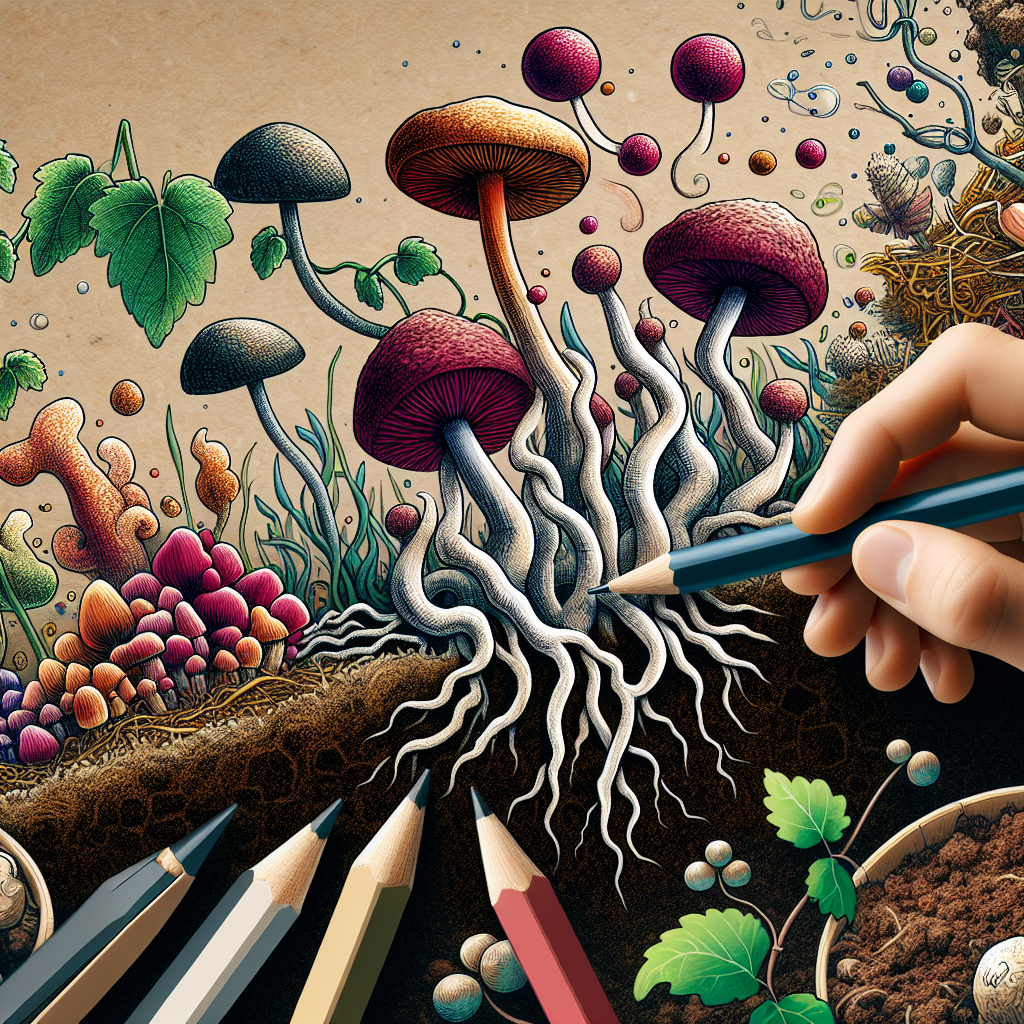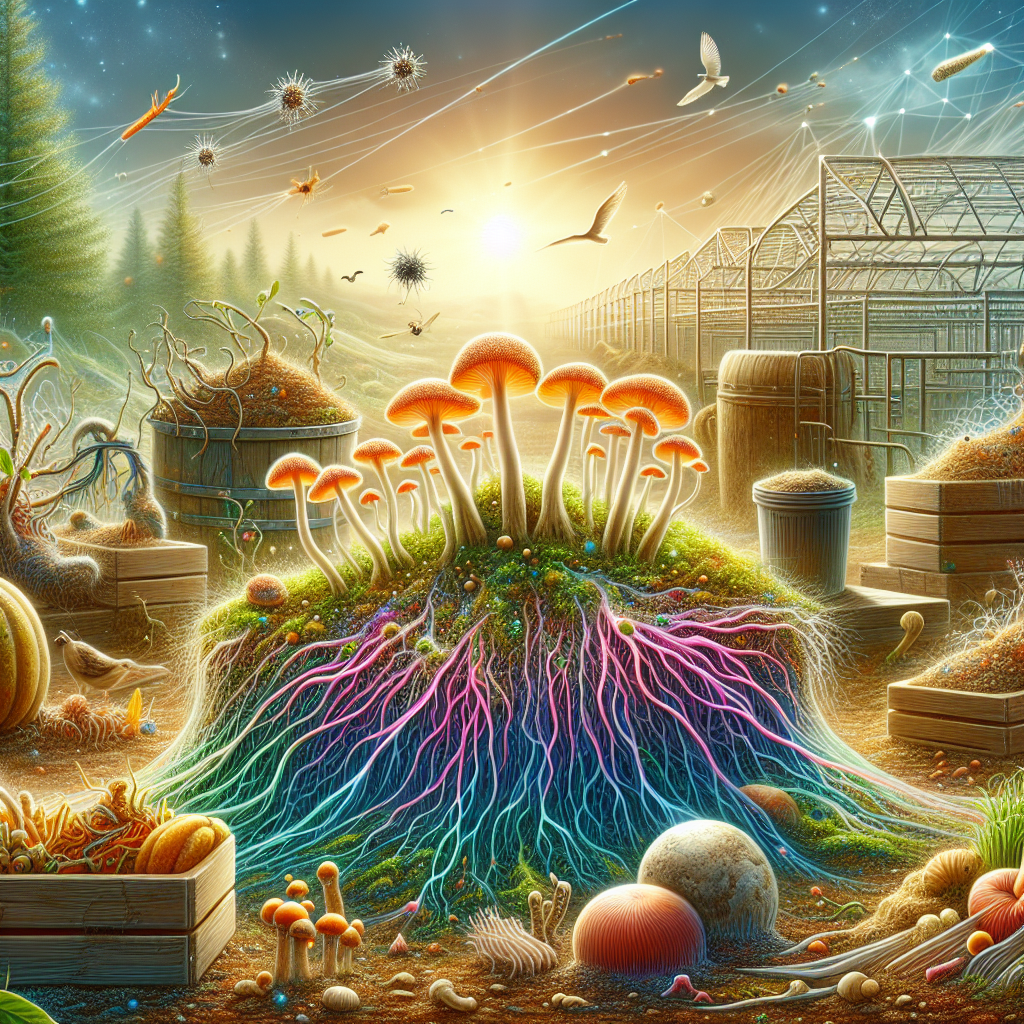In the splendid universe of viticulture, one intriguing and lesser-known aspect worth your attention is the wine cap mycelium. This article sheds light on this fascinating organism, its role in the winemaking process, and its incredible Nutritional and environmental benefits. Offering an in-depth review of its cultivation, its symbiotic relationship with grapevines, and the consequent impact on the wine’s characteristic distinctions, you’ll embark on an exciting journey, uncovering the secret life of wine cap mycelium.

Understanding Wine Cap Mycelium
When it comes to the fascinating world of fungi, the Wine cap mycelium has unsurprisingly garnered significant attention due to its vast uses, intricate network, and influence in multifarious domains, especially in the wine industry.
Definition and Basics
Wine cap mycelium refers to the vegetative part of a fungus, consisting of a network of fine-white filaments known as the mycelium, which is critical to the fungus’s growth, nutrition, and reproduction. Considered the actual body of a fungus, the mycelium is often underground. It fans out within the soil, absorbing nutrients, decomposing organic matter, and fostering ecological connections.
Origination and Special Characteristics
Native to North America, wine cap mycelium is a soil-based fungus, often found in woodlands and gardens. It gets its name from the wine-red hue of the fruiting caps. Apart from its vibrant color, this mycelium is known for its fast growth and meaty texture. It can also survive and thrive in various climates, making it versatile and adaptable.
Role in the Ecosystem
The wine cap mycelium is critical to the ecosystem. It acts as a decomposer, breaking down complex organic materials into simpler forms, thus playing a significant role in nutrient cycling. Furthermore, through a symbiotic relationship with plant roots, it enhances plant health and productivity.
Life Cycle of Wine Cap Mycelium
The life cycle of wine cap mycelium is complex and intriguing. It begins with the germination of a microscopic spore. This then grows, branching out to form the mycelium. Once mature, the mycelium forms a fruiting body, which then produces spores, thereby completing the cycle.
Importance of Wine Cap Mycelium in the Wine Industry
Wine cap mycelium is increasingly recognised as crucial in the wine industry, impacting various facets like the winemaking process, wine quality, and even sustainability.
Wine Caps in Winemaking
The spores of the wine cap can influence the winemaking process. They can have specific effects on fermentation, potentially altering the flavor and aroma profiles of wine. This has prompted many producers to harness these naturally occurring components to craft unique blends.
Implications for Wine Quality
Winemakers are also investing in wine cap mycelium to enhance wine quality. The compounds released by the fungus can potentially enhance the wine’s complexity and depth.
Utilization in Cork Production
In the sphere of cork production, wine cap mycelium is in demand due to its ability to break down cork tissue, resulting in more elastic, less leak-prone corks.
Sustainable Use of Wine Cap Mycelium
The wine industry is increasingly focused on sustainability, and wine cap mycelium can significantly reduce ecological footprints. These fungi can break down grape waste, reducing pollution and creating organic fertilizer in the process.
Biological Structure of Wine Cap Mycelium
The Mycelium Network
the mycelium network of the wine cap mycelium is an intricate web. Spanning across vast distances, it can infiltrate deep into soil strata, maximizing its nutrient absorption capabilities.
Functionality of Hyphae
Hyphae, the slender threads that constitute the mycelium, act as a lifeline of the fungus. They possess remarkable versatility, growing, branching, and colonizing organic matter, thereby aiding in the decomposition process.
Spore Production and Dispersal
Spore production and dispersal is a critical function of wine cap mycelium. The fruiting body of the fungus houses the spores, which once mature, are dispersed via wind or rain, ensuring the fungus’s survival and propagation.
Survival Strategies of Wine Cap Mycelium
Wine cap mycelium employs several survival strategies. It can lie dormant under unfavourable conditions, reviving once the conditions are favourable. Additionally, it affords resistance to many pathogens, thanks to its wide genetic diversity.

Growth and Cultivation of Wine Cap Mycelium
Ideal Growth Conditions
Wine cap mycelium thrives in moist, well-drained soils rich in organic matter. temperature and light also play a crucial role in its growth, with moderate temperatures and low light being ideal.
Cultivation Techniques
Cultivation traditionally involves inoculating a substrate (usually a mix of straw and wood chips) with mycelium. The substrate is then kept moist and covered to protect the budding mycelium.
Challenges and Solutions in Growing Wine Cap Mycelium
A significant challenge in cultivating wine cap mycelium is protecting it from contamination. Solutions involve sterilization techniques and the use of barriers to prevent the entry of contaminants.
Commercial Cultivation Methods
In commercial settings, wine cap mycelium is grown in temperature and light-controlled environments. Additionally, automated watering systems ensure consistent moist conditions, crucial for the mycelium’s growth.
Applications of Wine Cap Mycelium Beyond the Wine Industry
Beyond the wine industry, wine cap mycelium is gaining relevance in various sectors owing to its unique characteristics.
Role In Soil Fertilization
wine cap mycelium plays a crucial role in soil fertilization. Its decomposition ability breaks down organic matter, releasing essential nutrients, and thereby enriching the soil.
Use in Mushroom Production
The fruiting body of wine cap mycelium gives rise to mushrooms. These are not only delicious but also rich in antioxidants, vitamins, and other nutrients, resulting in increased demand in the culinary world.
Medical and Nutritional Uses
In the realm of health and nutrition, research is exploring the potential of wine cap mushrooms as a source of medicinal compounds and dietary supplements.
Contribution to Sustainable Farming and Forestry
The mycelium’s ability to improve soil fertility and plant health makes it a key player in advancing sustainable farming and forestry. By making plants more resilient to unfavorable conditions, it aids in maintaining biodiversity too.
The Role of Wine Cap Mycelium in the Ecosystem
Wine cap mycelium is integral to maintaining the health and balance of ecosystems.
Relationship with Other Organisms
It maintains symbiotic relationships with various plants, exchanging nutrients for sugars. This relationship helps improve plant health and productivity.
Decomposition and Nutrient Release
As a proficient decomposer, it transforms complex organic material into simpler nutrients. These nutrients are readily available for other organisms in the ecosystem, thus promoting healthy soil and plant growth.
Contribution to Soil Health and Fertility
By promoting nutrient cycling and improving soil structure, wine cap mycelium significantly contributes to soil health and fertility. This in turn supports a diverse range of soil microorganisms, enhancing the overall ecosystem.
Climate Change Resilience
The ability of wine cap mycelium to store carbon and foster plant health makes it a potentially important contributor to strategies for climate change resilience, sequestering carbon and reducing greenhouse gas emissions.
Potential Risks and Controversies Surrounding Wine Cap Mycelium
Despite its benefits, wine cap mycelium brings about certain risks and controversies.
Threats to Native Fungi and Biodiversity
Uncontrolled growth of wine cap mycelium may pose a threat to native fungi and biodiversity. Invasive species can outcompete local fungi, thereby disrupting balance within ecosystems.
Issues in Commercial Cultivation
Commercial cultivation brings its own issues. A mono-culture of a single species can lead to the spread of disease and, in the long run, loss of genetic diversity.
Potential Health Risks and Allergens
As with other fungi, wine cap mushrooms could pose health risks if improperly grown, leading to potential food-borne illnesses. They can also cause allergic reactions in some individuals.
Regulatory and Legal Issues
Regulatory issues concerning the commercial cultivation and sale of wine cap mycelium and its products are also a concern. Policymakers need to establish guidelines to ensure safety and sustainability.
Technological Advances in Studying Wine Cap Mycelium
With technological advances in mycology, our understanding of wine cap mycelium has evolved considerably.
Role of Mycology in Understanding Wine Cap Mycelium
Mycology, the study of fungi, has been critical in understanding the complex biology of wine cap mycelium. It has uncovered the unique properties of this fungus and its potential uses.
Techniques in Studying Fungal Networks
Innovative imaging techniques have allowed researchers to visualize the extensive network of the mycelium. These insights provide a deeper understanding of how wine cap mycelium interacts with its surroundings.
Genomic Insights and Future Research
Genomic studies present promising potential. Detailed genomic analysis can uncover the genetic basis for its unique properties and potentials in various sectors.
Implications for Bioengineering and Genetically Modified Organisms
The genomic insights gained might eventually be applicable in bioengineering. By modifying the genetic makeup of the wine cap, customized variants could be tailored for specific uses and applications.
Current Research and Future Trends in Wine Cap Mycelium
Research on wine cap mycelium is promising and could unlock a host of potential applications beneficial to society and the environment.
Latest Findings in Mycology
Recent studies in mycology have thrown light on several unexplored facets of wine cap mycelium. Researchers are increasingly uncovering its potential as a bioremediator, decomposer and source of nutrition.
Potential Impact on Climate Change and Soil Health
Future research would delve deeper into its potential in combating climate change and enhancing soil health due to its carbon sequestration and soil fertilization abilities.
Innovative Uses and Applications for the Future
Scientists are exploring innovative uses for wine cap mycelium, including creating sustainable alternatives to wood, cotton, and even plastic.
Commercial Exploitation and Business Opportunities
The numerous potential applications of wine cap mycelium mean numerous business opportunities. However, commercial exploitation must be balanced with sustainable practices and respect for biodiversity.
Education and Public Engagement on Wine Cap Mycelium
While the benefits of wine cap mycelium are extensive, it is essential to spread awareness and engage the public in the importance of this often overlooked organism.
Public Perception and Media Representation
Unfortunately, due to a lack of awareness and misconceptions about fungi, public perception of wine cap mycelium might not be as positive as it should be. Media representation plays a crucial role in shaping this perception.
Educational Initiatives and Community Engagement
Educational initiatives, workshops, and school programs could provide the much-needed awareness about the important role of wine cap mycelium. Community engagement can also lead to a broader appreciation and understanding of this fungus.
Role of Citizen Science and Public Participation
Citizen science projects involving the public in monitoring and studying wine cap mycelium could bring about wider acceptance, understanding, and protection of this crucial organism.
Importance of Advocacy and Policy
Lastly, advocacy at policy levels is vital. Policies that protect and promote sustainable use of wine cap mycelium can ensure that we continue to reap its benefits while securing biodiversity and the health of our ecosystems.